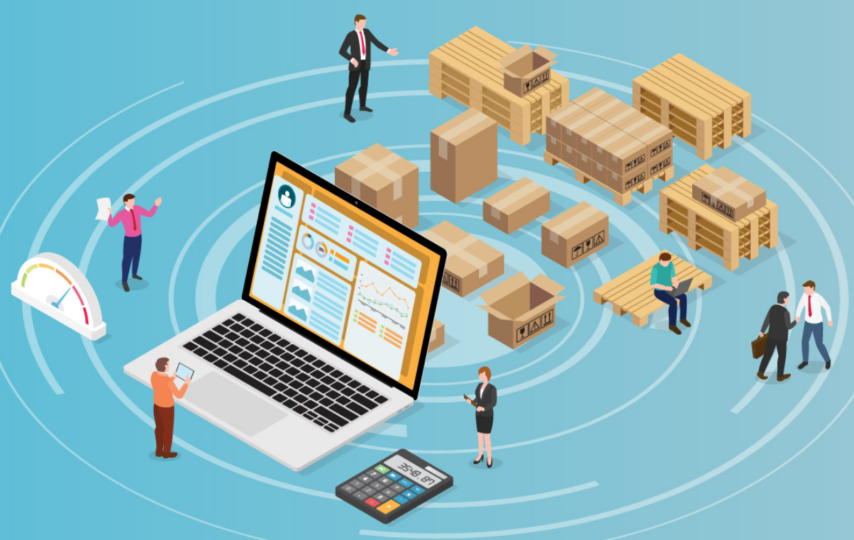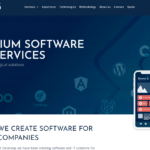Currently, the requirement for effective and smooth logistics operations has become more significant than ever. That is where Third Party Logistics (3PL) software comes in. This strong solution is changing how organizations handle their supply chains, providing consistent integration, real-time visibility, and working on functional productivity. With the assistance of Third Party Logistics (3PL) software, organizations can successfully oversee and streamline each part of their strategy activities, from inventory administration to order satisfaction and transportation. Therefore, let us dive in and find out the exciting prospects of this technology.
What is Third Party Logistics Software?
Third Party Logistics (3PL) software is the logistics technology that helps organizations oversee and upgrade their business operations. It is created to smooth out processes and further develop proficiency via automating, for example, order fulfillment, inventory & warehouse management, and transportation planning. It is customized to meet the particular necessities of various enterprises and can incorporate different frameworks like CRM and ERP programming. With 3PL software, organizations can acquire constant perceivability into their supply chain, improve overall operational performance, and make data-driven decisions.
With the power of ML and Artificial Intelligence, the third party logistics software can recognize trends and patterns, optimize routes, and anticipate demand, reducing costs with time. Furthermore, 3PL software offers a competitive edge by enhancing customer satisfaction. With real-time tracking and updates, businesses can provide accurate delivery estimates and improve overall customer experience.
Understanding Business Goals
Understanding your business goals and needs is critical when choosing 3PL software. Before diving into the different choices accessible, make a stride back and assess your particular prerequisites. Consider factors, for example, the size of your tasks, the volume of orders you handle, and the intricacy of your store network. Assessing these viewpoints will assist you with deciding the functionalities and features you expect from the software.
Furthermore, adjusting your decision to long-term business goals is significant. Are you looking to venture into new business sectors? Do you expect huge development sooner rather than later? Understanding these aspirations will ensure that the software can accommodate potential changes in your logistics operations. By comprehensively understanding your business goals and needs, you can make an informed decision on which 3PL software best suits your requirements.
Benefits of using Third Party Logistics Software
There are numerous benefits to using 3PL software for your business. Firstly, it can greatly enhance efficiency by automating manual tasks and streamlining processes. This can prompt quicker order fulfillment, improve productivity, and decrease errors. Moreover, the software gives real-time visibility into your supply chain, permitting you to monitor inventory levels and track shipments. This can bring about cost savings through reduced transportation expenses and better inventory management.
Besides, 3PL software can further develop consumer loyalty by giving exact and timely information about delivery and order status. Overall, executing this software can assist organizations with improving their logistics operations and reducing expenses.
- Streamlining Operations
Third party logistics software is revolutionizing the way businesses manage their operations. By automating manual tasks, and smoothing out processes, this software can incredibly upgrade effectiveness and efficiency. With continuous visibility into the supply chain, businesses can monitor inventory and track shipments. If you’re hoping to improve your logistics operations, executing 3PL software is a game-changer.
- Enhancing Customer Satisfaction
One of the vital advantages of 3PL software is the capacity to enhance customer satisfaction. The transparency builds confidence and trust, as customers can follow their shipments and know precisely when to anticipate their orders. Also, the software permits organizations to streamline routes, ensuring quicker and more effective conveyances. By further developing the overall customer experience, organizations can increase customer faithfulness and fulfillment, prompting repeat business and positive verbal exchange references.
- Cost Savings and Efficiency Improvements
Implementing third party logistics software can lead to significant cost savings and efficiency improvements for businesses. By optimizing transportation routes and reducing unnecessary mileage, businesses can save on fuel costs and reduce their carbon footprint. The software also allows for better inventory management, minimizing the risk of overstocking or stockouts. This leads to reduced storage costs and improved cash flow. Additionally, the automation and streamlining of processes through the software can save time and reduce human error, further increasing efficiency. Overall, the use of third party logistics software can help businesses operate more effectively and competitively in the market.
- Analyzing the Security Measures
Analyzing the safety efforts and data protection capacities is of the most extreme significance when choosing 3PL software. As organizations progressively depend on digital platforms to deal with their supply chains, safeguarding delicate data becomes critical. The software ought to offer robust security highlights, including encryption conventions, firewalls, and secure information storage to prevent unauthorized cyberattacks or unauthorized access. Also, the software ought to consent to industry-explicit guidelines, for example, HIPAA or GDPR to guarantee data security and assurance.








